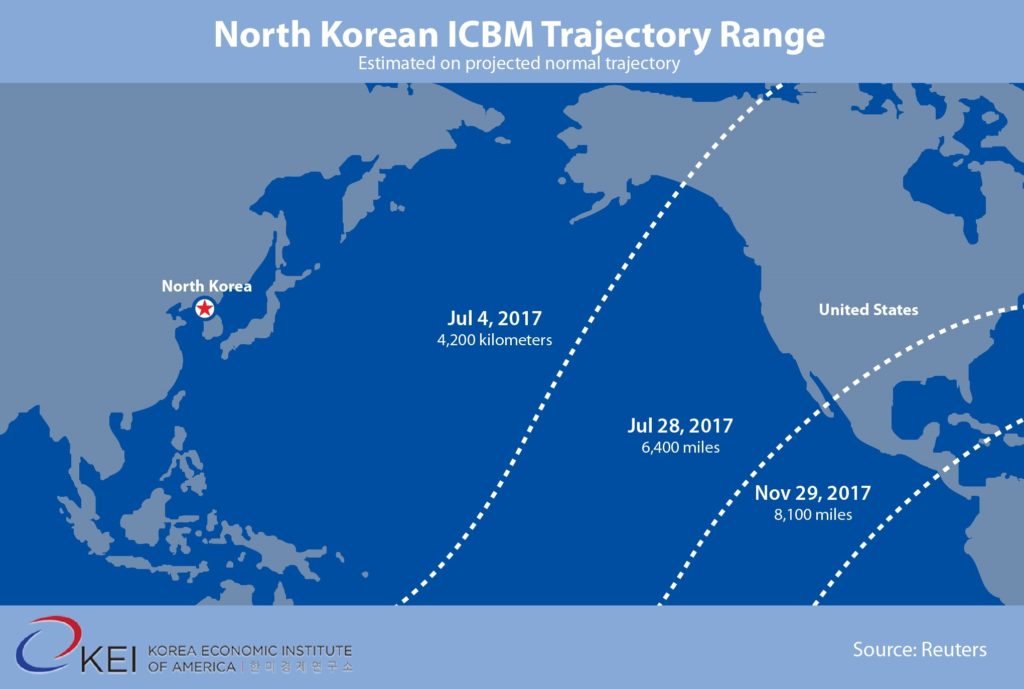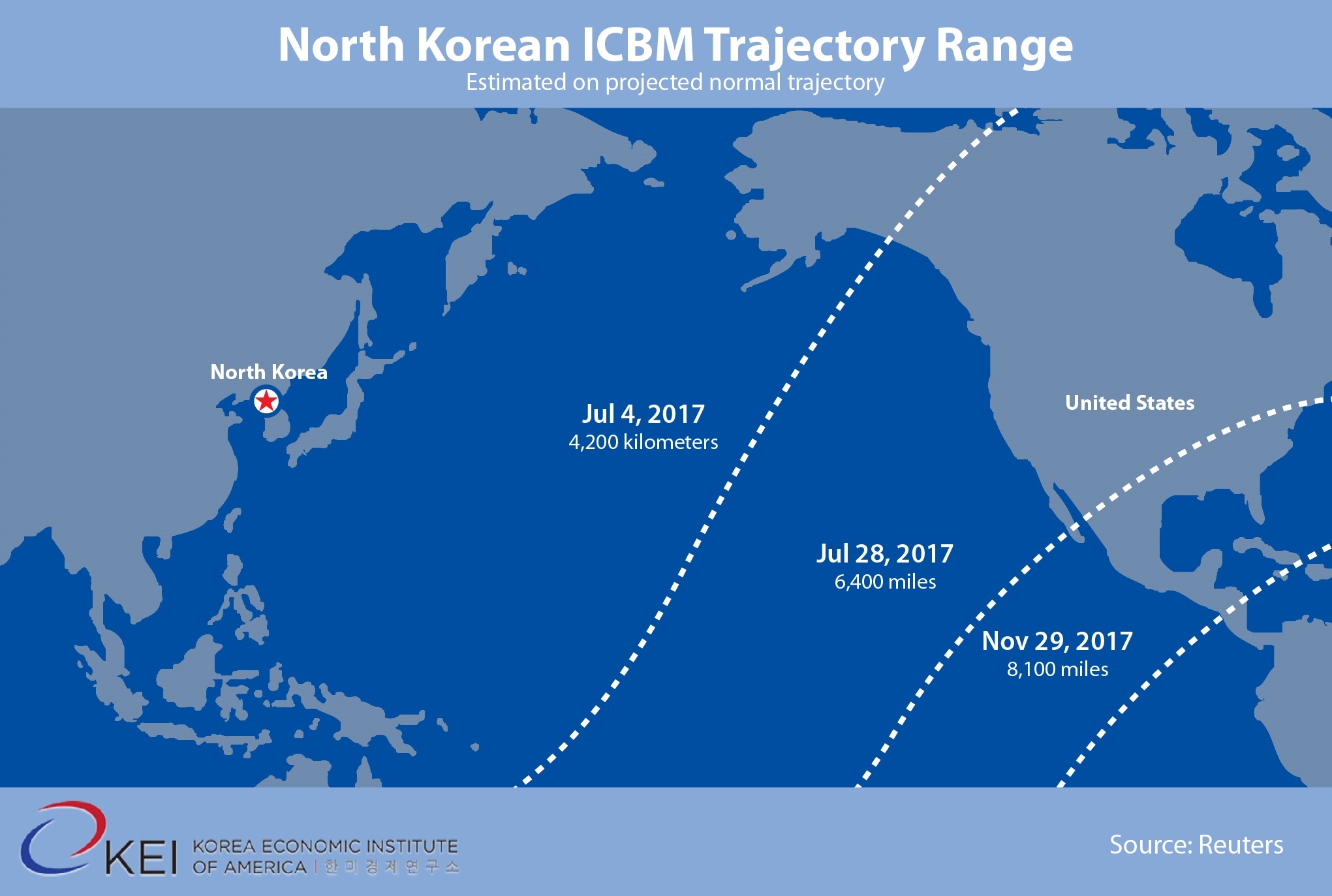The Peninsula
North Korean ICBM Tests

By Juni Kim
On November 29th, North Korea conducted yet another intercontinental ballistic missile (ICBM) test after two tests earlier this year in July. Launched at a nearly vertical test trajectory, the Hwasong-15 missile reached nearly 2,800 miles above the earth’s surface and flew for over 50 minutes. The Union of Concerned Scientists estimated that the newly tested missile could travel 8,100 miles if launched at a normal trajectory, which is in range of the entire United States. The test demonstrates the continuing trend of North Korea’s rapidly advancing, and deeply troubling, missile technology.
Including the most recent missile test, North Korea has now conducted three successful ICBM tests with significant gains in missile range for each successive test. All three tests were also conducted this year. Below is a brief overview of each test and the U.S reaction following the tests.

July 4 Test
While most Americans were preparing for Independence Day festivities, North Korea launched the Hwasong-14 missile on July 4th, the first successful ICBM test the rogue nation has conducted. The missile peaked at a height of 1,740 miles and flew over 580 miles into the East Sea. Analysts surmised that the missile could reach Alaska if launched at a normal trajectory, but not the continental United States.
U.S. Ambassador the U.N. Nikki Haley called the test a “clear and sharp military escalation” and called on China to properly enforce UN sanctions on North Korea. Similarly, U.S. President Donald Trump tweeted, “So much for China working with us – but we had to give it a try!”
July 28 Test
Less than a month after the first ICBM test, North Korea conducted another Hwasong-14 missile test. The missile exceeded the range of the previous test, and landed in the East Sea after peaking at 2,300 miles. The projected standard trajectory was estimated to be able to reach much of the continental United States including the entire West Coast. North Korean state media stated that the test was meant to be a “stern warning” to the United States by Kim Jong-un.
On August 5th, the United Nations Security Council passed UNSCR 2371, a resolution designed to further tighten sanctions on North Korea in retaliation for both July ICBM tests. President Trump on August 8th warned North Korea that they would be met with “fire and fury” if the regime continued its provocations.
November 29 Test
Following the two Hwasong-14 tests in July, North Korea demonstrated the capabilities of its Hwasong-15 ICBM this past Tuesday. The range of the missile eclipsed the previous two missile tests and reached a top altitude of 2,780 miles. The projected standard trajectory of 8,100 miles would cover the entire continental United States.
During an emergency meeting at the UN on Wednesday, Ambassador Nikki Haley stated, “The dictator of North Korea made a choice yesterday that brings the world closer to war, nor farther from it.” Additionally, President Trump avowed “additional major sanctions” on North Korea after tweeting that he spoke with Chinese President Xi Jinping yesterday morning.
Juni Kim is the Program Manager and Executive Assistant at the Korea Economic Institute of America (KEI). The views expressed here are the author’s alone.
Photo from Prachatai’s photostream on flickr Creative Commons.
